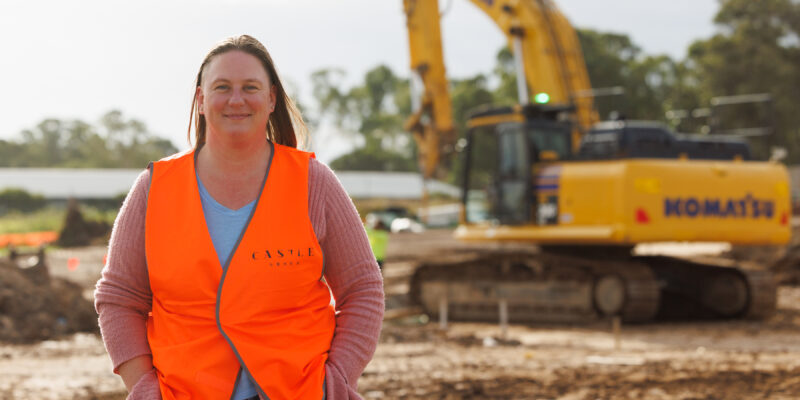How UK business leader Nick Hale is moving conveyancing forward
On a visit to Sydney to learn about the conveyancing landscape, he talked about issues facing UK conveyancers – and the positives he’s picked up from the Aussie market.

WITH more than 600 people working under the Movera brand umbrella, chief executive Nick Hale is clearly confident describing the firm as the UK’s leading home moving business.
The seven brands that make up Movera facilitate multiple touchpoints, enabling more than half a million transactions a year, across a range of services.
On a visit to Sydney to learn about the conveyancing landscape, he talked to Australian Conveyancer about the issues facing UK conveyancers – and the positives he’s picked up from the Aussie market.
AC: Tell us about Movera and what has helped make it such a success?
NH: We have a simple philosophy. Everything we do is to improve home moving for our people, partners and clients with experiences that are digital when they can be and personal when they need to be. Movera is in a great position – 74% of our people believe in the strategy and intend to be here two years from now. It’s quite unusual in the sector to have that level of engagement and commitment. Our net promoter scores are in the high sixties and we are gaining market share, increased profitability and financial performance quarter on quarter.
AC – What sort of things have you seen that set Australian and UK conveyancing apart?
NH: In the Australian market there is a more consistent and positive customer experience, with lower fallout rates and faster transactions. Some of that is the adoption of technology. Some of that is the adoption of structural change on expectations around timescales to complete the transaction. Some of it is the maturity of the sector that I would argue is a little bit ahead of where the UK is today.
In the UK, 25% of transactions fail, often due to delays or issues within chains, which don’t exist in Australia. Through the chains that build up, all sorts of things can happen over an extended period. People can separate, divorce, lose confidence in the eye washing amounts of money that they’re about to commit in one of the biggest financial commitments of their lives. People also find out things about a property that they can’t resolve or negotiate over.
AC: How do the timescales in the UK compare to Australia where 42 days is typical.
NH: Our completion time is consistently 130 days, versus a UK average of upwards of 140 days. It puts pressure on the commercial model for conveyancers and It effectively means a proportion of their time overall on their caseload is not positive. They’ve spent time working on a transaction that doesn’t complete. And that is not to anybody’s benefit.

AC: Conveyancing is a bit of a cottage industry in this country, with lots of small businesses. Is it similar in the UK?
NH: The remortgage side of the market is a relatively modest number of pretty significant players of which we are the largest.
Overall, the sale and purchase market is very fragmented. The top four providers between them have less than 10% market share. Then there’s a tail of 4,000 firms that support the remainder of the market, a number that has been steadily reducing in recent years. And there are different levels of professional maturity.
We have invested significantly in Artificial Intelligence to improve the experience for our clients, our partners and our people. That AI is not affordable for smaller firms. Nor do they have the skills and the resource to deploy those kinds of things. So there a very big difference between how conveyancers go through a typical transaction.
AC: One of the issues conveyancers talk about here in Australia is a drive to the bottom when it comes to price. There’s a fixed fee regime that upsets some people. Is that the case in UK?
NH: Some people get a little bit worked up about no completion, no fee. I certainly don’t. I think if that is a model that consumers value, then as an industry, our job is to put a commercial proposition that meets consumers’ needs and to build that into our pricing structure. That’s the reality. I do not recognise the race to the bottom point at all. Our blended average fee is consistently increasing, quarter by quarter. And if you look at our net promoter scores, or our trust pilots and our completion times, they contribute to my opinion that price is not the most sensitive lever. The cost of conveyancing is a relatively modest part of the overall transaction. It’s one of the biggest life-changing events beyond birth, death, marriage, and divorce – and when done well, I don’t think price is something that is particularly sensitive.
AC: One of the complaints also is that the conveyancers sit at the bottom end of the value chain in that transaction and some advocate for having a percentage of the sale.
NH: There is a sentiment within the sector that perhaps the work a conveyancer does is not valued as much as it could be. But I also think it is incumbent on businesses like us to engage their own people and to build a culture where recognition doesn’t necessarily come from the outside, it comes from the inside.
Do Movera people feel positive about the fact that we are making home move better for our people but the clients? Yes. Do our engagement scores show that? Yes. And does our client feedback say that? Yes. On the point around whether we should get a percentage of a transaction, I personally think that clouds a picture. And I think the way I look at it is we are providing a service that is valued. We have margin expectations, and we need to earn sufficient money to be able to continue to invest in our business and people, to continue to evolve home moving and the role that we play in it. I think that’s about pricing strategy and winning in the market.
If our margins exploded because suddenly we were just taking a percentage of the fees – and if that happened across the sector – I’m not convinced that it would be a positive impact on policy. Whereas if you’re effectively getting paid, if you are earning for the value that you create and your price strategy reflects what you’re able to stand behind, I think that’s a healthiest scenario.

AC: One of the big things here is the compliance burden, especially around anti-money laundering, incoming property disclosure in Queensland. Is compliance an issue in the UK?
NH: One issue in the UK is around upfront material information. This is where transactions get extended because some of the basic data is not available when it should be and that slows it down.
The second is around AI. We’ve invested in an AI business which is effectively taking unstructured data on both sides of the transaction, creating structured reports that are ingested into case management systems or shared via email, whichever way either party operates. That is improving the accuracy and speed, and taking the administrative burden off property lawyers, recognizing that there are people like Land Registry, mortgage brokers, conveyancers estate agents who all need better visibility of what is happening on a transaction as it progresses through that value chain. That’s something that we’ve been working on that will speed transactions and change the experience for many. We view AI as a crucial tool for freeing up property lawyers’ time, allowing them to focus more on providing advice and assisting more clients more efficiently.
AC: Recent Stamp Duty changes caused a lot of headaches for conveyancers – and could be again with additional changes being brought in by the new Labour government. What’s happening there?
NH: Yes. three years ago, there were several successive deadlines for stamp duty incentives. Without a good handle on the need to balance the work that was needed, it slowed transactions for a bunch of consumers who needed to complete on a certain day. Effectively that pushed the resilience and the tolerance of people who were working in the sector beyond what was reasonable. Frankly, many firms couldn’t cope.
The message on stamp duty I think is twofold. I passionately believe it should be as easy as possible for people to get on the housing ladder for first time buyers. Everybody deserves a place to call home and property prices in the UK are expensive and it is difficult for people to do to make that first step.
In terms of government policy, the thing that we really need is no surprises. A change in stamp duty that is sustained over a period is something that is easier to understand. When people are incentivised to act within a timeframe, that risks a surge in demand that’s difficult for the industry to cope with. It doesn’t create an ongoing stimulus in the way in which a permanent policy change would.




